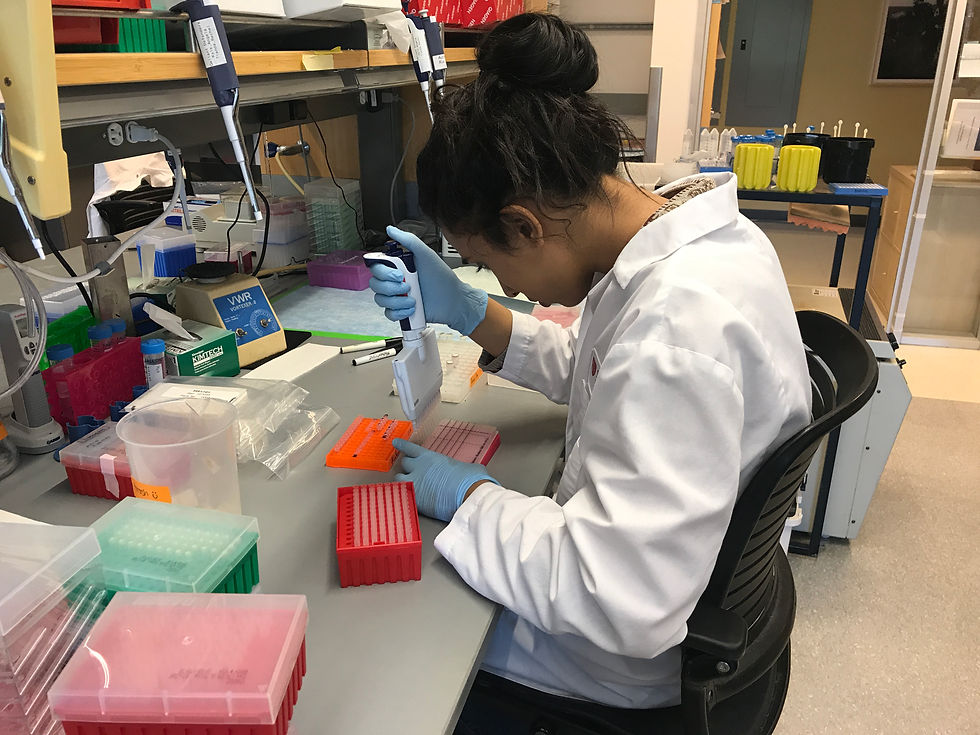What is cDNA and qPCR?
- Sara
- Mar 10, 2017
- 1 min read

We created the cDNA from the RNA because cDNA is far more stable and can be processed by our analytical tools.
The cDNA is checked for markers through qPCR. The first step of qPCR is to remove the tubes from the thermal cycler that has been creating the cDNA. The thermal cycles works by alternating between hot phases where the hydrogen bonds between the two strands of DNA break and cold phases where the single strands are used to create complementary strand. We then lay out a “plate”. A plate can hold up to 324 samples, but can only test each sample for one gene marker. Since each test usually has 24 cDNA tubes, and each sample needs to be run in duplicate, so we can run up to 8 markers at a time. These markers indicate which part of the brain we are forming by checking to see if genes that are usually expressed in that area are being expressed in our cells. (Markers are currently the best validation test we can perform, but as the experiment progresses, we hope to test the functionality and validity of the cells by injecting them into mice.) qPCR data is analyzed by noting the number of fold increases (two-fold, eight-fold, etc.) of the genes compared to their expression in embryonic stem cells. Because of the wide variability of data, the lab only considers increases significant if they are over 1000-fold. We are currently analyzing some new plates, and I will let you know about the results soon!


Comments